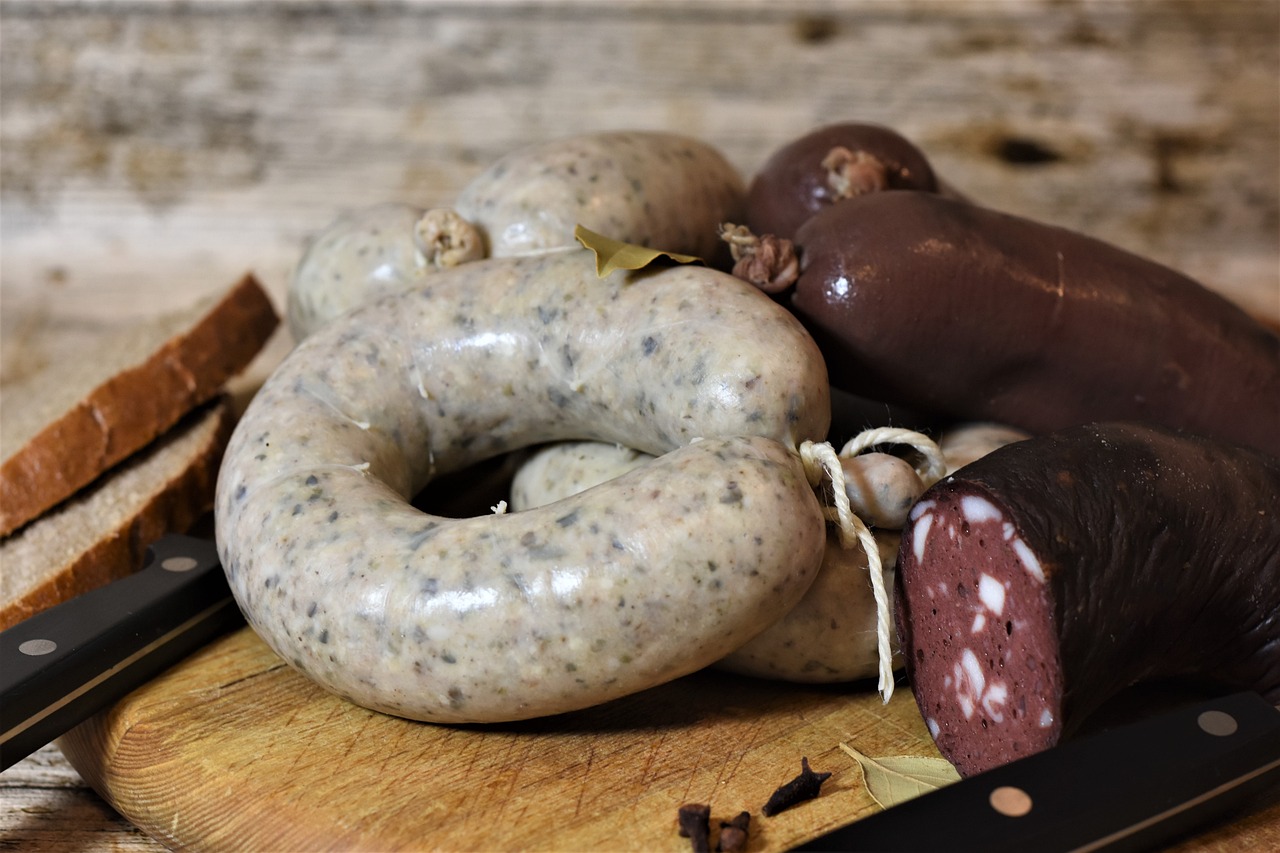
German Blutwurst, or blood sausage, is a unique and traditional delicacy that has been a staple in German cuisine for centuries. With its rich flavors and distinct texture, Blutwurst is a testament to the diversity and depth of German culinary arts. This article will guide you through the process of making authentic German Blutwurst at home, providing a glimpse into its cultural significance and offering tips for the perfect sausage.
Ingredients and Equipment
Ingredients:
- 2 liters of fresh pig’s blood
- 500g pork belly
- 500g pork liver
- 1 large onion, finely chopped
- 2-3 cloves of garlic, minced
- 250g cooked barley or oat groats
- Salt and pepper to taste
- 1 tsp marjoram
- 1 tsp allspice
- Natural sausage casings
Equipment:
- Large mixing bowl
- Large pot for boiling
- Meat grinder
- Sausage stuffer
- Frying pan
Step-by-Step Guide
1. Preparing the Meat and Blood: First, ensure that the pig’s blood is fresh and free from clots. If necessary, strain it to remove any impurities. Cut the pork belly and liver into small pieces, suitable for grinding.
2. Cooking the Meat: Boil the pork belly and liver in water until fully cooked. Once done, let it cool and then grind using a meat grinder. You can choose a fine or coarse grind based on your preference.
3. Mixing the Ingredients: In the large mixing bowl, combine the ground meat, fresh pig’s blood, cooked barley or oat groats, finely chopped onion, minced garlic, and the spices. Mix thoroughly to ensure the ingredients are evenly distributed.
4. Filling the Casings: Carefully rinse the natural sausage casings in cold water. Using the sausage stuffer, fill the casings with the blood mixture. Be careful not to overfill to avoid bursting during cooking.
5. Cooking the Blutwurst: Tie off the ends of the sausages and prick any air bubbles with a needle. In a large pot of simmering water, cook the sausages for about 60-90 minutes. Ensure the water is not boiling, as this can cause the sausages to burst.
6. Cooling and Storing: After cooking, cool the Blutwurst in cold water. They can be stored in the refrigerator for up to a week or frozen for longer storage.
Serving Suggestions
Traditionally, Blutwurst is served sliced and pan-fried until crispy on the outside. It pairs excellently with sauerkraut, boiled potatoes, or apple slices. For a contemporary twist, try serving it with a spicy mustard or a tangy chutney.
Nutritional Information
Blutwurst is rich in protein and iron, thanks to the blood and meat content. However, it is also high in fat and cholesterol, so it should be consumed in moderation.
Variations and Tips
- Variations: Every region in Germany has its variation of Blutwurst. Some include rice, breadcrumbs, or pine nuts.
- Spice Levels: Adjust the spices according to your preference. Some people add nutmeg or cloves for an extra kick.
- Quality of Ingredients: The quality of the blood and meat is crucial for the final taste. Always opt for the freshest ingredients.
- Cooking Tip: Ensure the water is just simmering while cooking the sausages to prevent them from bursting.
Making Blutwurst at home is a rewarding experience that offers a taste of traditional German cuisine. This recipe is a perfect start for those looking to explore the rich and diverse world of German culinary traditions.
FAQs
Q: Can I use beef blood instead of pig’s blood? A: Yes, though the flavor profile will be slightly different.
Q: How long can I store homemade Blutwurst? A: In the refrigerator, it can last up to a week, and if frozen, it can last several months.
Q: Is there a vegetarian alternative to Blutwurst? A: While traditional Blutwurst requires blood, there are vegetarian recipes that mimic its texture and flavor using plant-based ingredients.
This comprehensive guide to making German Blutwurst not only provides a delicious recipe but also immerses you in the cultural heritage of German cuisine. Perfect for adventurous cooks and lovers of authentic culinary experiences!
Related Recipes:
German Knackwurst Recipe
German Wurst Guide
German Weißwurst Recipe
Liverwurst
Mettwurst
Classical German Sausage
German Sausage with Apples Sauerkraut and Onion
German Sausage Soup
